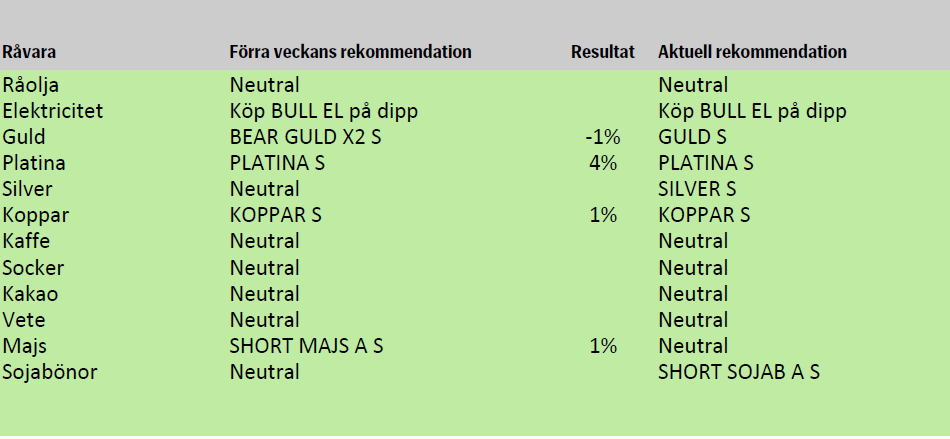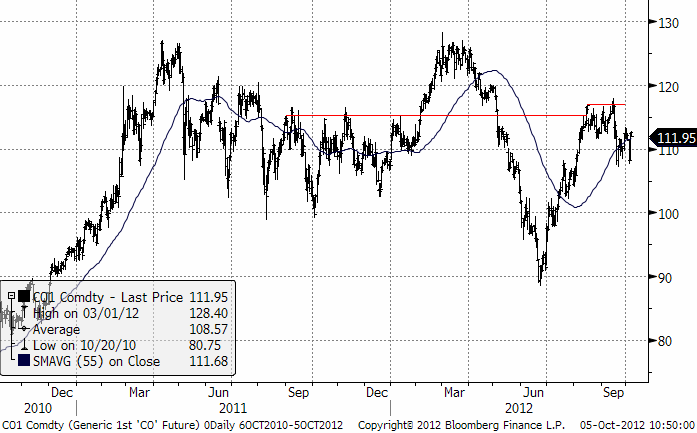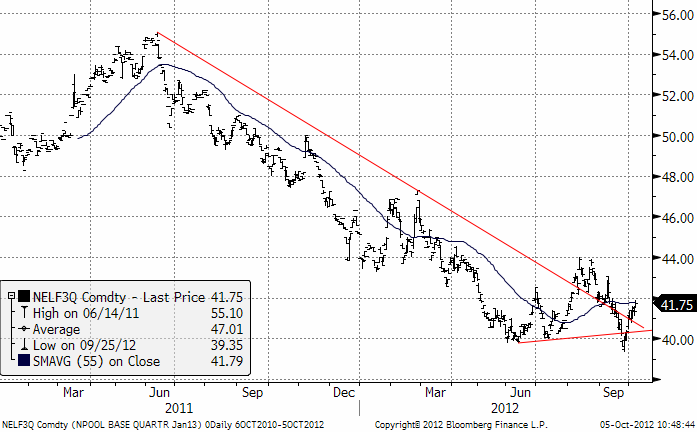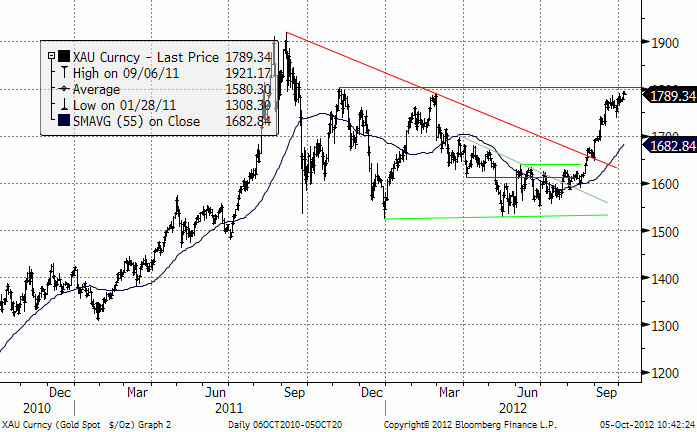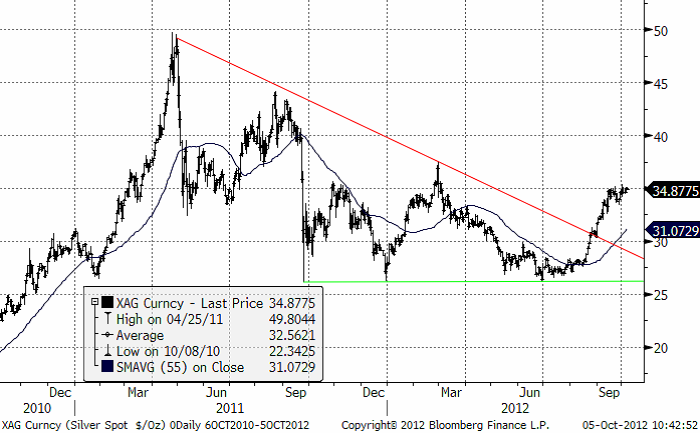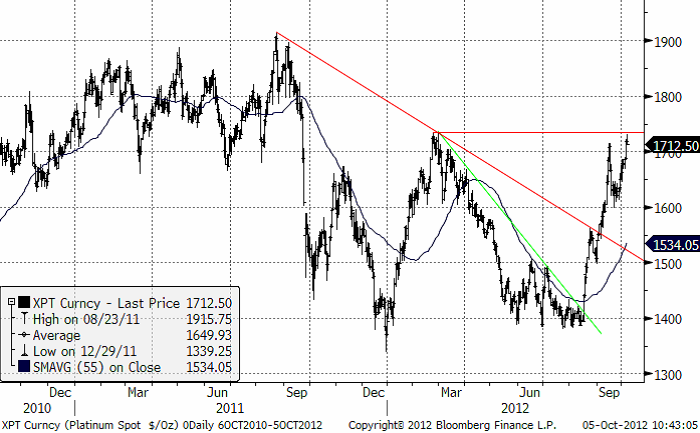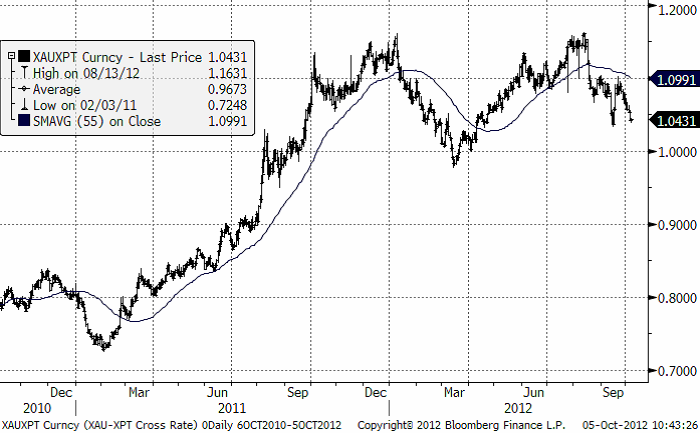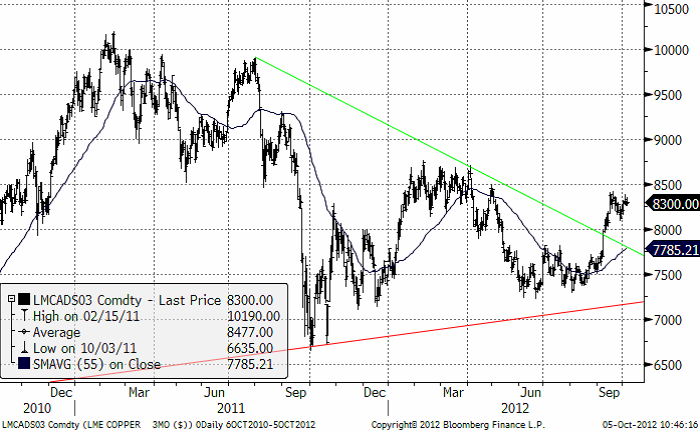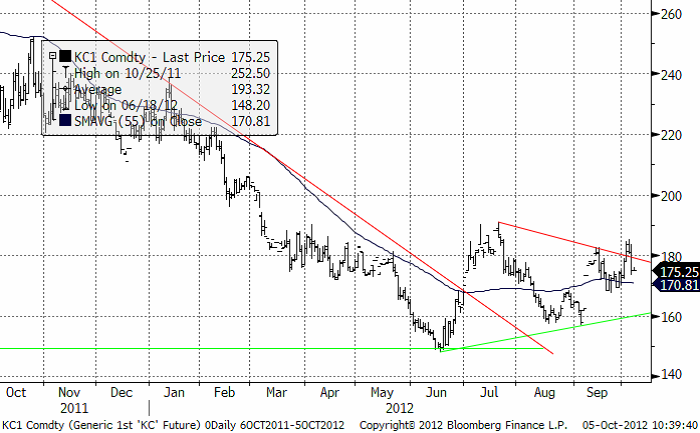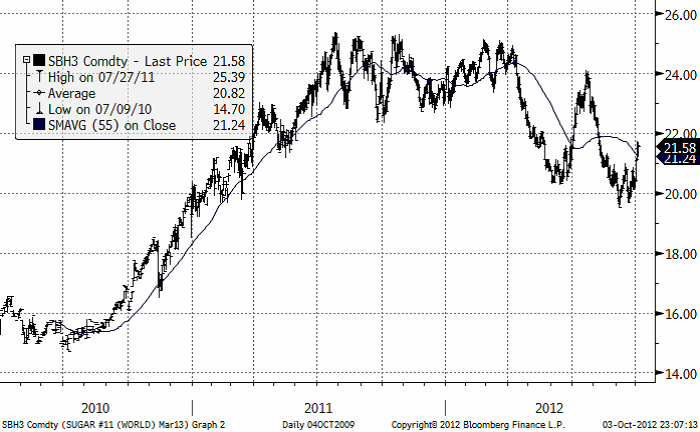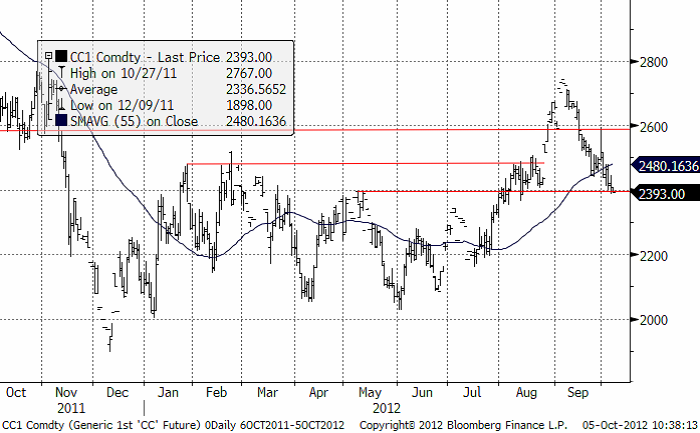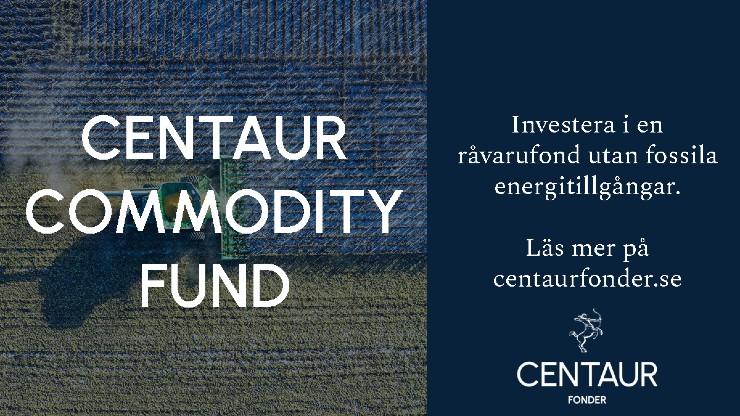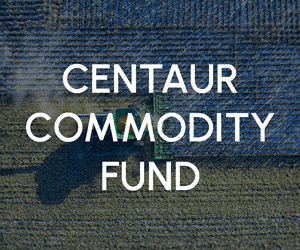Analys
SEB – Råvarukommentarer, 5 oktober 2012
Sammanfattning av rekommendationer
Förra veckans rekommendationer gav en samlad vinst på 5%. Vi stänger den korta positionen i majs. Vi väljer att gå kort. Sojabönor, som dock ligger på tekniskt stöd nu och som man hellre bör sälja på rekyler uppåt. Vi stänger förra veckans mycket kortsiktiga kontra-trend-rekommendationen i guld, som visade sig vara fel. Platina fortsätter att vara vår huvudfavorit.
Råolja – Brent
Råoljemarknaden har var under press i veckan och Brent var på onsdagen ned hela 3%. Flera olika faktorer har bidragit till pressen ned. Marknaden har tidigare varit mer fokuserad på störningar på utbudssidan och på den geopolitiska oron i Mellanöstern. Tecken på vikande aktivitet i Kina har, tidigare, inte påverkat priset på olja på samma sätt som t e x metaller. Nu verkar det ändå skett ett skifte där man prisar in efterfrågefaktorer mer. Tecken finns bland annat på att sanktionerna mot Iran börjar ge resultat (se nedan). Dessutom redovisas högre produktion från bland annat Ryssland, Irak och också från USA, som nu är uppe på den högsta produktionsnivån sedan 1996! med 6.52 miljoner fat/dag.
Flera faktorer på utbudssidan har mildrats; Det verkar som sanktionerna mot Iran börjar ge resultat. Regimen pressas sedan tidigare av uteblivna intäkter från oljeexport. I september exporterades 1.15 miljoner fat/dag jämfört med 2.4 miljoner fat/dag i genomsnitt förra året. Nu har dessutom uppvärmningssäsongen inletts. Iran har, trots att man är stor nettoexportör av råolja, inte tillräcklig raffinaderikapacitet för att förse den inhemska marknaden med oljeprodukter som bensin, diesel och olja för uppvärmning. Istället måste man köpa dessa produkter på den internationella marknaden – till höga priser (bland annat p g a sanktionerna). Att den egna valutan dessutom urholkats i värde gör inte saken bättre. Höga matpriser har redan drivit upp inflationen och nu är situationen än värre. Trycket på regimen är så stort, att chansen för att man återgår till förhandlingar med USA och EU, är bättre än på länge.
I september var rekordstor kapacitet i Nordsjön borta från marknaden p g a underhåll och reparationer. Många av dessa arbeten är försenade men vi räknar ändå med att utbudet snart ökar, vilket bör mildra pressen uppåt på olja. Vi har också passerat den säsongsmässiga toppen på orkansäsongen utan några allvarliga implikationer på oljemarknaden (med undantag för Isaac som kortsiktigt störde produktion och distribution i mexikanska gulfen).
Trots ovanstående argument för nedsidan, så ser vi värde kring Brentpris kring nivåer där priset tidigare vänt åter upp (kring 107-108 usd). Detta då den geopolitiska situationen i Iran och Syrien m fl länder fortsatt verkar för en premie på oljepriset. I skrivande stund handlas kontraktet på 110.20, där vår rekommendation, förblir neutral.
Elektricitet
Elterminerna har rört sig sidledes till svagt upp sedan förra veckan.
I det mesta är situationen oförändrad. Den hydrologiska balansen visar fortsatt på överskott på ca 12-15 TWh och väderprognoserna indikerar mer än normal nederbörd de närmaste 10 dygnen, medan temperaturen indikerar kring normal. Vi är inne i en årstid där normaltemperaturen är fallande men än så länge är det nästan uteslutande regn som fallit.
Vattenmagasinen är mycket välfyllda och kärnkraften har god tillgänglighet med 84% av kapaciteten igång, vilket innebär fortsatt risk för ”körpress” för vattenkraftproducenterna.
Trots det har man lyckat få lite andrum, spotpriset har stigit och spreaden mellan södra Norge och systempris har minskat. Orsaken är bättre kapacitet på kablar för export från Norge samt den säsongsmässiga temperaturminskningen. Vi håller fortsatt en neutral rekommendation men gör oss beredda att köpa.
Guld och silver
Den tekniskt kritiska nivån på nedsidan som vi skrev om förra veckan ($1748) bröts aldrig. Det är först om priset på stängningsbasis ligger under som vi tror att en större rekyl är förestående (som skulle kunna innebära en kortsiktig affärsmöjlighet med en kort position). Som det ser ut just nu strävar istället priset uppåt, och ligger strax ovanför den övre delen av de senaste veckornas konsolideringsintervall, i skrivandes stund handlas $1791. Ligger marknaden kvar på nuvarande nivå eller högre på måndag, så är det en starkare signal eftersom brottet är i riktning med trenden. För den som inte redan köpt, kan det snart vara dags. Timingen är viktig, och den tekniska analysen kan därför vara en värdefull vägledning.
Nedan ser vi kursdiagrammet för guld i dollar per troy ounce.
Nedan ser vi kursdiagrammet för silver i dollar per troy ounce.
Platina
Platina är vinnaren, upp 3,5 % sedan förra fredagen. Som befarat har strejkerna spridits i Sydafrika, nu även till guld- och järnmalmsgruvor. Anglos fyra platinagruvor utanför Rustenburg har drabbats av vilda strejker, och företaget rekommenderar de kvarvarande 20 % av arbetsstyrkan att lämna arbetet då inte säkerheten kan garanteras.
Vi tror på ädelmetaller som placering i nuvarande makromiljö. Den oroliga utvecklingen i Sydafrika har redan påverkat utbudet märkbart. Vi tror att platina priset kommer att utmana igen och återgå till ”normaltillståndet”, d.v.s. att vara dyrare än guld. I skrivandes stund har priset brutit över den tidigare toppen för några veckor sedan på $1715. Nästa tekniska motstånd kommer in vid $1735-nivån. Det ser starkt ut. Trots veckans redan positiva utveckling tror vi inte att det är för sent att köpa.
Nedan ser vi priset på guld dividerat med priset på platina. Vi väntar oss att platina ska fortsätta vinna på guldet.
Koppar
Allmänt om basmetallerna: Månadsskifte innebär inköpschefsindex (ISM), som normalt presenteras den 1:a i månaden för både Europa, USA och Kina. Metallerna korrelerar traditionellt med denna statistik. En siffra över 50 betyder tillväxt och vice versa. Kinas kom in under 50 för andra månaden i rad, men steg från augustis 49,2 till 49,8. USA överraskade med en uppgång från 49,6 till 51,5. Konjunkturen balanserar mellan tillväxt och avmattning. Kina gör vad de kan för att stimulera. Förra veckan gjordes en rekordstor påspädning av likviditet via marknadsoperationer (delvis inför den kinesiska långhelgen i samband med nationaldagsfirandet). Metallpriserna började det nya kvartalet på den positiva sidan.
Koppar och nickel är upp ca 1 % sedan förra fredagen.
Koppar
Vi har i de senaste breven beskrivit kopparmarknaden som i grunden fundamentalt stark. Stimulansåtgärderna borgar för en fortsatt stabil marknad. Det behövs fler indikationer på ökad industriell efterfrågan innan marknaden tar nya tag på uppsidan.
Priset på LME har gjort vissa försök i veckan med en högsta notering på $8380 ( $3,80/Lbs). Men återigen finns inte riktigt kraften. De finansiella aktörerna har redan positionerat sig för uppgång. För nya lyft behöver de fylla på, alternativt att industrin börjar ta en mer framsynt vy och täcker in framtida konsumtion. Kanske avvaktas LME-veckan, då världens metallfolk traditionsenligt samlas i London, i mitten av oktober. Nedan ser vi ett diagram över priset på tremånadersterminen på LME.
Vi väljer att på kort sikt rekommendera en lång position i koppar.
Kaffe
Kaffepriset har fallit tillbaka ner i konsoliderings-zonen. Vi fortsätter att vara neutrala till något positiva till kaffepriset.
Socker
Nedan ser vi priset för leverans i mars nästa år. Trots ett starkt stöd vid 20 cent, ser vi tydligt att den långsiktiga trenden är nedåtriktad.
Kakao
Kakaopriset har nått ett tekniskt stöd. Om priset stabiliserar sig vid 2400 dollar, och ser ut att ha fått fast mark under fötterna, kan det vara intressant att köpa lite försiktigt.
Vi väljer att vara neutrala i kakao till nästa vecka.
För spannmål och övriga jordbruksprodukter hänvisas till gårdagens nyhetsbrev om jordruksprodukter.
[box]SEB Veckobrev Veckans råvarukommentar är producerat av SEB Merchant Banking och publiceras i samarbete och med tillstånd på Råvarumarknaden.se[/box]
Disclaimer
The information in this document has been compiled by SEB Merchant Banking, a division within Skandinaviska Enskilda Banken AB (publ) (“SEB”).
Opinions contained in this report represent the bank’s present opinion only and are subject to change without notice. All information contained in this report has been compiled in good faith from sources believed to be reliable. However, no representation or warranty, expressed or implied, is made with respect to the completeness or accuracy of its contents and the information is not to be relied upon as authoritative. Anyone considering taking actions based upon the content of this document is urged to base his or her investment decisions upon such investigations as he or she deems necessary. This document is being provided as information only, and no specific actions are being solicited as a result of it; to the extent permitted by law, no liability whatsoever is accepted for any direct or consequential loss arising from use of this document or its contents.
About SEB
SEB is a public company incorporated in Stockholm, Sweden, with limited liability. It is a participant at major Nordic and other European Regulated Markets and Multilateral Trading Facilities (as well as some non-European equivalent markets) for trading in financial instruments, such as markets operated by NASDAQ OMX, NYSE Euronext, London Stock Exchange, Deutsche Börse, Swiss Exchanges, Turquoise and Chi-X. SEB is authorized and regulated by Finansinspektionen in Sweden; it is authorized and subject to limited regulation by the Financial Services Authority for the conduct of designated investment business in the UK, and is subject to the provisions of relevant regulators in all other jurisdictions where SEB conducts operations. SEB Merchant Banking. All rights reserved.
Analys
Tightening fundamentals – bullish inventories from DOE

The latest weekly report from the US DOE showed a substantial drawdown across key petroleum categories, adding more upside potential to the fundamental picture.

Commercial crude inventories (excl. SPR) fell by 5.8 million barrels, bringing total inventories down to 415.1 million barrels. Now sitting 11% below the five-year seasonal norm and placed in the lowest 2015-2022 range (see picture below).
Product inventories also tightened further last week. Gasoline inventories declined by 2.1 million barrels, with reductions seen in both finished gasoline and blending components. Current gasoline levels are about 3% below the five-year average for this time of year.
Among products, the most notable move came in diesel, where inventories dropped by almost 4.1 million barrels, deepening the deficit to around 20% below seasonal norms – continuing to underscore the persistent supply tightness in diesel markets.
The only area of inventory growth was in propane/propylene, which posted a significant 5.1-million-barrel build and now stands 9% above the five-year average.
Total commercial petroleum inventories (crude plus refined products) declined by 4.2 million barrels on the week, reinforcing the overall tightening of US crude and products.
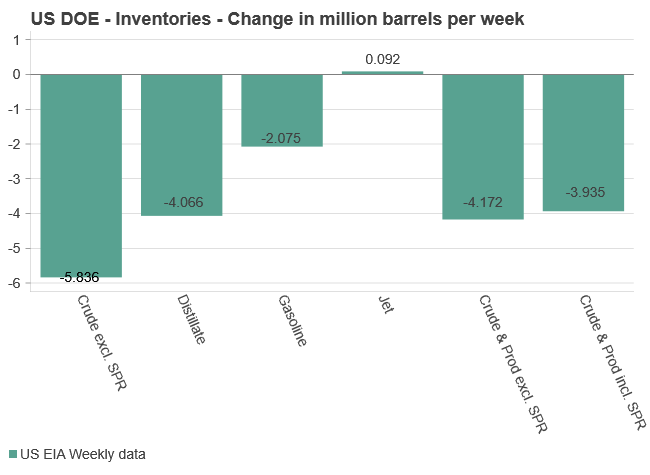

Analys
Bombs to ”ceasefire” in hours – Brent below $70

A classic case of “buy the rumor, sell the news” played out in oil markets, as Brent crude has dropped sharply – down nearly USD 10 per barrel since yesterday evening – following Iran’s retaliatory strike on a U.S. air base in Qatar. The immediate reaction was: “That was it?” The strike followed a carefully calibrated, non-escalatory playbook, avoiding direct threats to energy infrastructure or disruption of shipping through the Strait of Hormuz – thus calming worst-case fears.

After Monday morning’s sharp spike to USD 81.4 per barrel, triggered by the U.S. bombing of Iranian nuclear facilities, oil prices drifted sideways in anticipation of a potential Iranian response. That response came with advance warning and caused limited physical damage. Early this morning, both the U.S. President and Iranian state media announced a ceasefire, effectively placing a lid on the immediate conflict risk – at least for now.
As a result, Brent crude has now fallen by a total of USD 12 from Monday’s peak, currently trading around USD 69 per barrel.
Looking beyond geopolitics, the market will now shift its focus to the upcoming OPEC+ meeting in early July. Saudi Arabia’s decision to increase output earlier this year – despite falling prices – has drawn renewed attention considering recent developments. Some suggest this was a response to U.S. pressure to offset potential Iranian supply losses.
However, consensus is that the move was driven more by internal OPEC+ dynamics. After years of curbing production to support prices, Riyadh had grown frustrated with quota-busting by several members (notably Kazakhstan). With Saudi Arabia cutting up to 2 million barrels per day – roughly 2% of global supply – returns were diminishing, and the risk of losing market share was rising. The production increase is widely seen as an effort to reassert leadership and restore discipline within the group.
That said, the FT recently stated that, the Saudis remain wary of past missteps. In 2018, Riyadh ramped up output at Trump’s request ahead of Iran sanctions, only to see prices collapse when the U.S. granted broad waivers – triggering oversupply. Officials have reportedly made it clear they don’t intend to repeat that mistake.
The recent visit by President Trump to Saudi Arabia, which included agreements on AI, defense, and nuclear cooperation, suggests a broader strategic alignment. This has fueled speculation about a quiet “pump-for-politics” deal behind recent production moves.
Looking ahead, oil prices have now retraced the entire rally sparked by the June 13 Israel–Iran escalation. This retreat provides more political and policy space for both the U.S. and Saudi Arabia. Specifically, it makes it easier for Riyadh to scale back its three recent production hikes of 411,000 barrels each, potentially returning to more moderate increases of 137,000 barrels for August and September.
In short: with no major loss of Iranian supply to the market, OPEC+ – led by Saudi Arabia – no longer needs to compensate for a disruption that hasn’t materialized, especially not to please the U.S. at the cost of its own market strategy. As the Saudis themselves have signaled, they are unlikely to repeat previous mistakes.
Conclusion: With Brent now in the high USD 60s, buying oil looks fundamentally justified. The geopolitical premium has deflated, but tensions between Israel and Iran remain unresolved – and the risk of missteps and renewed escalation still lingers. In fact, even this morning, reports have emerged of renewed missile fire despite the declared “truce.” The path forward may be calmer – but it is far from stable.
Analys
A muted price reaction. Market looks relaxed, but it is still on edge waiting for what Iran will do

Brent crossed the 80-line this morning but quickly fell back assigning limited probability for Iran choosing to close the Strait of Hormuz. Brent traded in a range of USD 70.56 – 79.04/b last week as the market fluctuated between ”Iran wants a deal” and ”US is about to attack Iran”. At the end of the week though, Donald Trump managed to convince markets (and probably also Iran) that he would make a decision within two weeks. I.e. no imminent attack. Previously when when he has talked about ”making a decision within two weeks” he has often ended up doing nothing in the end. The oil market relaxed as a result and the week ended at USD 77.01/b which is just USD 6/b above the year to date average of USD 71/b.

Brent jumped to USD 81.4/b this morning, the highest since mid-January, but then quickly fell back to a current price of USD 78.2/b which is only up 1.5% versus the close on Friday. As such the market is pricing a fairly low probability that Iran will actually close the Strait of Hormuz. Probably because it will hurt Iranian oil exports as well as the global oil market.
It was however all smoke and mirrors. Deception. The US attacked Iran on Saturday. The attack involved 125 warplanes, submarines and surface warships and 14 bunker buster bombs were dropped on Iranian nuclear sites including Fordow, Natanz and Isfahan. In response the Iranian Parliament voted in support of closing the Strait of Hormuz where some 17 mb of crude and products is transported to the global market every day plus significant volumes of LNG. This is however merely an advise to the Supreme leader Ayatollah Ali Khamenei and the Supreme National Security Council which sits with the final and actual decision.
No supply of oil is lost yet. It is about the risk of Iran closing the Strait of Hormuz or not. So far not a single drop of oil supply has been lost to the global market. The price at the moment is all about the assessed risk of loss of supply. Will Iran choose to choke of the Strait of Hormuz or not? That is the big question. It would be painful for US consumers, for Donald Trump’s voter base, for the global economy but also for Iran and its population which relies on oil exports and income from selling oil out of that Strait as well. As such it is not a no-brainer choice for Iran to close the Strait for oil exports. And looking at the il price this morning it is clear that the oil market doesn’t assign a very high probability of it happening. It is however probably well within the capability of Iran to close the Strait off with rockets, mines, air-drones and possibly sea-drones. Just look at how Ukraine has been able to control and damage the Russian Black Sea fleet.
What to do about the highly enriched uranium which has gone missing? While the US and Israel can celebrate their destruction of Iranian nuclear facilities they are also scratching their heads over what to do with the lost Iranian nuclear material. Iran had 408 kg of highly enriched uranium (IAEA). Almost weapons grade. Enough for some 10 nuclear warheads. It seems to have been transported out of Fordow before the attack this weekend.
The market is still on edge. USD 80-something/b seems sensible while we wait. The oil market reaction to this weekend’s events is very muted so far. The market is still on edge awaiting what Iran will do. Because Iran will do something. But what and when? An oil price of 80-something seems like a sensible level until something do happen.
-

 Nyheter3 veckor sedan
Nyheter3 veckor sedanStor uppsida i Lappland Guldprospekterings aktie enligt analys
-

 Nyheter4 veckor sedan
Nyheter4 veckor sedanBrookfield ska bygga ett AI-datacenter på hela 750 MW i Strängnäs
-
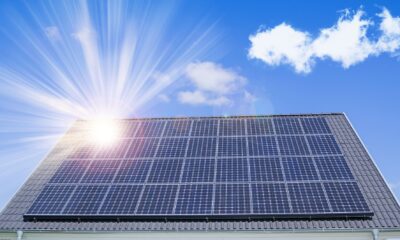
 Nyheter4 veckor sedan
Nyheter4 veckor sedanSommaren inleds med sol och varierande elpriser
-

 Nyheter4 veckor sedan
Nyheter4 veckor sedanOPEC+ ökar oljeproduktionen trots fallande priser
-

 Nyheter3 veckor sedan
Nyheter3 veckor sedanSilverpriset släpar efter guldets utveckling, har mer uppsida
-

 Analys4 veckor sedan
Analys4 veckor sedanBrent needs to fall to USD 58/b to make cheating unprofitable for Kazakhstan
-

 Nyheter4 veckor sedan
Nyheter4 veckor sedanTradingfirman XTX Markets bygger datacenter i finska Kajana för 1 miljard euro
-
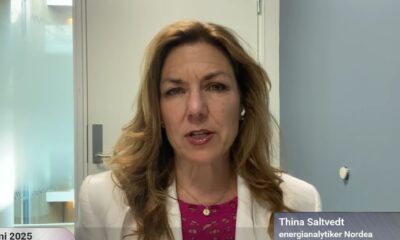
 Nyheter2 veckor sedan
Nyheter2 veckor sedanUppgången i oljepriset planade ut under helgen



